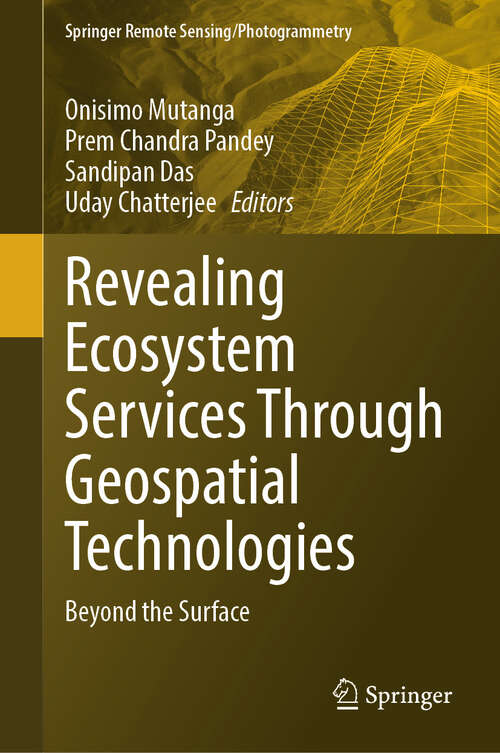Revealing Ecosystem Services Through Geospatial Technologies: Beyond the Surface (Springer Remote Sensing/Photogrammetry)
By: and and and
Sign Up Now!
Already a Member? Log In
You must be logged into Bookshare to access this title.
Learn about membership options,
or view our freely available titles.
- Synopsis
- This book covers the quantification of forests, grasslands, and woodlands ecosystem services from the supply side (e.g., regulatory and provisioning services) to the demand side, including human cultural needs. The Millennium Ecosystem Assessment (MA, 2005) defines ecosystem services as simply the benefits that are derived from ecosystems for human well-being (Board 2005). The report has documented that ecosystems have contributed more than 50% of the world's GDP. However, as a result of climate change and anthropogenic impacts, about 60% of the world's ecosystem services have been degraded. This significant reduction of services has serious consequences on food production, climate regulation, and net primary production, among other services which directly affect human well-being. In order to appreciate the benefits of various ecosystems to humanity and monitor their degradation, a systematic quantification of ecosystem services and their change in both time and space is critical. In particular, there is a need to characterize the ecological infrastructures, processes, and ecosystem functions that underpin the ecosystem services in ways that can be evaluated and tracked (Potschin and Haines-Young 2016). In addition, various intervention measures to restore degraded ecosystems require constant and accurate measurement of the ecosystem characteristics in order to assess the benefits of ecological restoration. Vegetation in particular provides a number of provisioning (forage production, food), regulatory (climate, temperature), supporting (primary production, nutrient cycling), and cultural (educational, recreation) ecosystem services as well as biodiversity maintenance (Masenyama et al. 2022). Remote sensing data contributes significantly to mapping, modeling, and quantitative valuation of the ecosystem services in a spatially explicit manner. It provides an opportunity to use standard protocols at various spatial scales as well as wall-to-wall mapping of phenomena through time, which is critical for monitoring on a continuous basis.
- Copyright:
- 2025
Book Details
- Book Quality:
- Publisher Quality
- ISBN-13:
- 9783031980480
- Related ISBNs:
- 9783031980473
- Publisher:
- Springer Nature Switzerland
- Date of Addition:
- 08/30/25
- Copyrighted By:
- The Editor
- Adult content:
- No
- Language:
- English
- Has Image Descriptions:
- No
- Categories:
- Nonfiction, Science, Earth Sciences
- Submitted By:
- Bookshare Staff
- Usage Restrictions:
- This is a copyrighted book.
- Edited by:
- Onisimo Mutanga
- Edited by:
- Prem Chandra Pandey
- Edited by:
- Sandipan Das
- Edited by:
- Uday Chatterjee
Reviews
Other Books
- by Prem Chandra Pandey
- by Uday Chatterjee
- by Sandipan Das
- by Onisimo Mutanga
- in Nonfiction
- in Science
- in Earth Sciences
